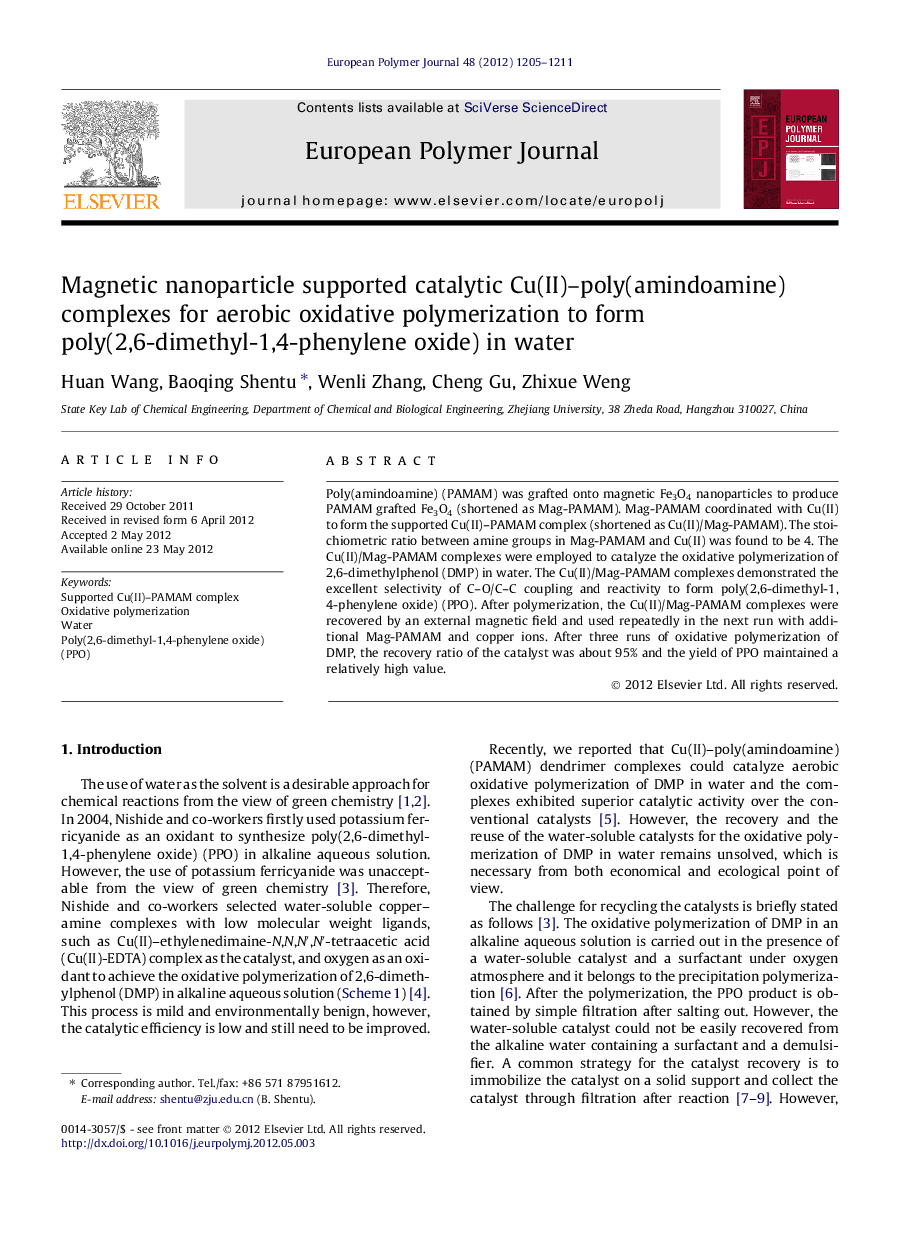| Article ID | Journal | Published Year | Pages | File Type |
|---|---|---|---|---|
| 1399726 | European Polymer Journal | 2012 | 7 Pages |
Poly(amindoamine) (PAMAM) was grafted onto magnetic Fe3O4 nanoparticles to produce PAMAM grafted Fe3O4 (shortened as Mag-PAMAM). Mag-PAMAM coordinated with Cu(II) to form the supported Cu(II)–PAMAM complex (shortened as Cu(II)/Mag-PAMAM). The stoichiometric ratio between amine groups in Mag-PAMAM and Cu(II) was found to be 4. The Cu(II)/Mag-PAMAM complexes were employed to catalyze the oxidative polymerization of 2,6-dimethylphenol (DMP) in water. The Cu(II)/Mag-PAMAM complexes demonstrated the excellent selectivity of C–O/C–C coupling and reactivity to form poly(2,6-dimethyl-1,4-phenylene oxide) (PPO). After polymerization, the Cu(II)/Mag-PAMAM complexes were recovered by an external magnetic field and used repeatedly in the next run with additional Mag-PAMAM and copper ions. After three runs of oxidative polymerization of DMP, the recovery ratio of the catalyst was about 95% and the yield of PPO maintained a relatively high value.
Graphical abstractFigure optionsDownload full-size imageDownload as PowerPoint slideHighlights► Mag-PAMAM coordinated with Cu(II) to form the supported Cu(II)–PAMAM complex. ► The Cu(II)/Mag-PAMAM complex demonstrated good catalytic performance in synthesis of PPO. ► After reaction, the supported catalyst was collected by an external magnetic field. ► The reuse of supported catalyst in the synthesis of PPO in water was realized.
